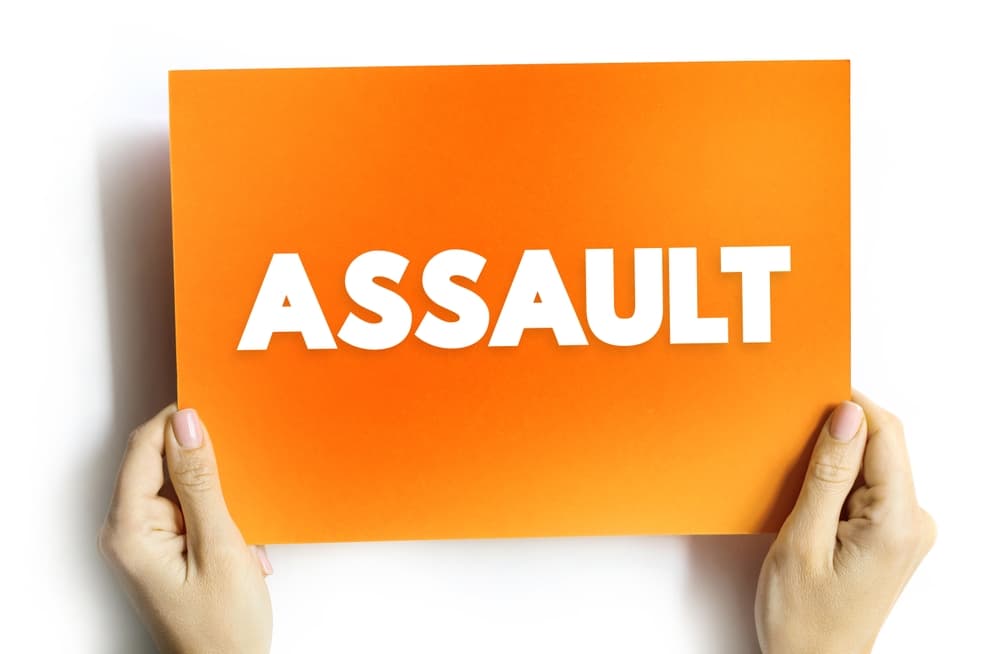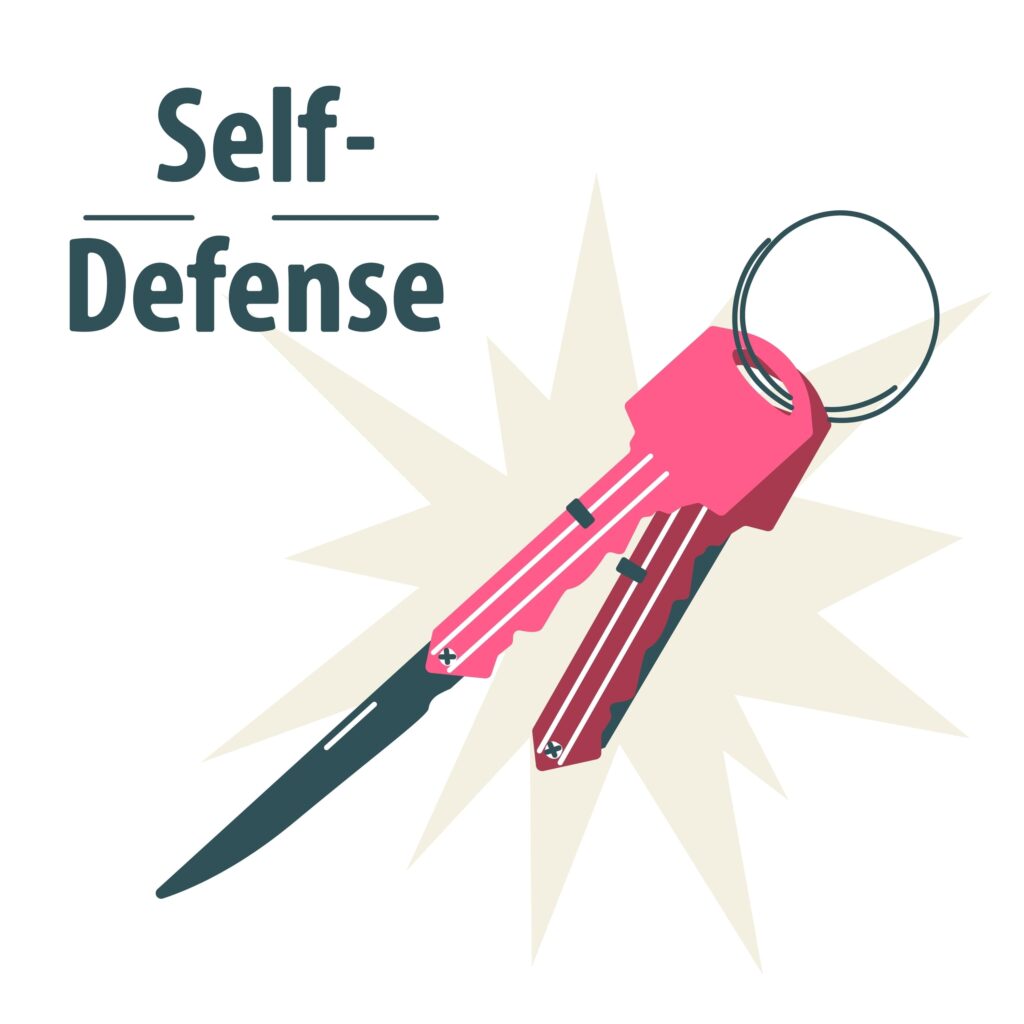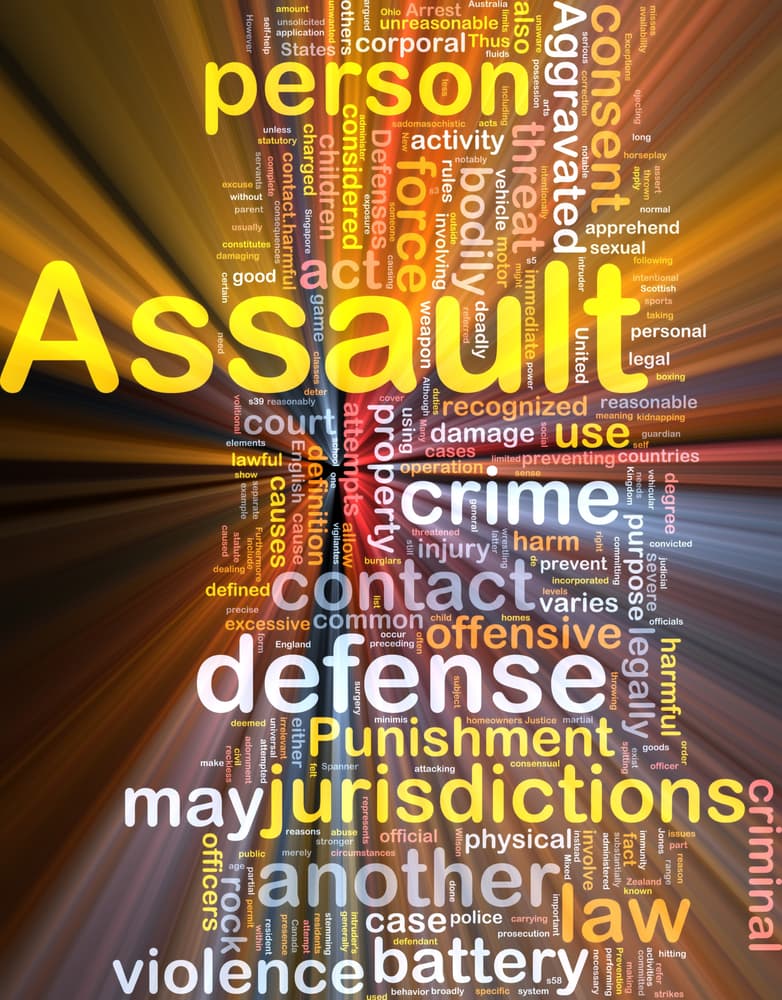Facing an aggravated assault charge in California demands immediate attention and a strategic legal defense from an experienced criminal defense lawyer. This charge can lead to severe penalties, including significant jail time if handled improperly.
Understanding California law and the potential defenses can make a substantial difference in the outcome of your case.
Here, we outline key strategies for defending against aggravated assault charges. The best thing to do is immediately hire an assault and battery defense attorney to build a strong case against your charges.
Aggravated Assault in California Law
According to California Penal Code Section 245, aggravated assault is an unlawful attempt to inflict violent injury on another person using a deadly weapon, a firearm, a semiautomatic weapon, or any other means of force likely to cause great bodily harm.
The circumstances that make an assault aggravated depend on the type of weapon used, the degree of injury caused, and the identity of the victim. For example, assaulting a peace officer or a firefighter who is performing their duties is considered aggravated assault, regardless of the weapon or injury involved.
Authorities can charge aggravated assault as either a misdemeanor or a felony, making it a serious crime, depending on the facts of the case and the defendant's criminal history.
The possible penalties for aggravated assault range from six months to 12 years in jail or prison and a fine of up to $10,000.
The law takes aggravated assault extremely seriously, and so should you. Always have an aggressive criminal defense lawyer defending you.
Self-Defense
Self-defense is grounded in the idea that people have the right to protect themselves or others from immediate harm under certain conditions.

Imminent Threat
For a self-defense claim to be valid, the threat of harm must be immediate and imminent. This means that the person claiming self-defense must have had a reasonable belief that they (or someone else) were in danger of being physically harmed right then and there.
The threat can be verbal or physical, but it must be credible and immediate, leaving no time for deliberation or seeking help from law enforcement.
Reasonable Belief
The belief in the necessity of self-defense must be reasonable from the perspective of a reasonable person standing in the same shoes as the defendant. This includes considering the physical capabilities of all parties involved, any previous threats or incidents, and the circumstances leading up to the event.
The assessment is not purely subjective; it must align with what an average person would deem reasonable under the same circumstances.
Proportionality
The response to the threat must be proportional to the level of danger perceived. This means the force used in self-defense must not exceed what is reasonably necessary to prevent harm.
For instance, responding to a non-lethal threat with lethal force might exceed the bounds of proportionality unless there was a genuine and reasonable belief that such force was necessary to prevent imminent death or serious bodily harm.
No Duty to Retreat
In California, there is no legal requirement to retreat before using force in self-defense in most situations. If you are not the aggressor, and you are in a place where you have a right to be, you can typically stand your ground and use reasonable force to defend yourself without the need to retreat.
Limitations and Exceptions
While self-defense is a widely recognized defense, its application has limitations and exceptions.
For example:
- The aggressor cannot claim self-defense unless they've withdrawn from the conflict and communicated that withdrawal, but the other party continues the aggression.
- Using excessive force beyond necessary to counter the threat can negate a self-defense claim.
- Special situations, such as domestic violence cases, may have additional considerations, such as the history of violence between the parties.
Evidentiary Considerations

Proving self-defense requires presenting evidence that supports the claimant's version of events. This may include eyewitness testimony, medical records, surveillance footage, and any other evidence that can demonstrate the immediacy of the threat, the reasonableness of the belief in danger, and the proportionality of the response.
Self-defense is a complex defense that many people misunderstand. To assert this defense, you must have a skilled criminal defense attorney.
Lack of Intent Defense
Aggravated assault, under the California Penal Code, is not just a matter of causing injury to another person; it involves doing so under circumstances that demonstrate a specific intent to cause serious injury or a reckless indifference to the well-being of others.
Intent can include:
- Specific Intent: The defendant intended to cause a specific result (e.g., to inflict serious bodily injury).
- General Intent: The defendant intended to perform the act that led to the injury but did not necessarily intend the injury's result.
- Reckless Disregard: The defendant acted in a manner that was a gross deviation from how a reasonable person will act, showing indifference to the potential for causing serious harm.
Accidental Actions
One of the most direct applications of the lack of intent defense is demonstrating that the incident was accidental.
Suppose the defendant can demonstrate that there was no intention to commit the act that led to the assault or that it occurred without recklessness or negligently. In that case, this can negate the element of intent required for aggravated assault.
Misunderstanding or Mistake
Another form of lack of intent defense arises from a genuine misunderstanding or mistake. For instance, if the defendant believed their actions were necessary under the circumstances but was mistaken about the need for such actions, this can demonstrate a lack of intent to cause harm.
Insufficient Evidence of Intent
Challenging the prosecution's evidence regarding intent is a common defense strategy. Suppose the defense can raise a reasonable doubt about whether the defendant truly had the specific intent to cause serious injury or acted with reckless disregard for human life. In that case, the charge of aggravated assault may not stand.
No Forethought or Deliberation
Demonstrating that the defendant's actions were impulsive or reactive, without consideration, can also serve as a defense. This approach seeks to show that the incident did not involve the level of intent necessary for aggravated assault, particularly if the act was more reflexive than calculated.
Insufficient Evidence
The prosecution bears the burden of proving the defendant's guilt beyond a reasonable doubt. This standard is the highest in the legal system, reflecting that a guilty person should go free rather than an innocent one to be wrongfully convicted.
When defending against aggravated assault charges, one effective strategy is to highlight the insufficiency of the prosecution's evidence. This approach can take several forms, each targeting different aspects of the prosecution's case.
Challenging the Credibility of Witnesses
One common weakness in criminal cases is the reliability of witness testimony. Witnesses may have biases, their memories may be flawed, or they may have misinterpreted the events they witnessed. In some cases, witnesses may even have motives to lie.
Defense attorneys can expose these weaknesses through careful cross-examination, pointing out inconsistencies in testimonies or questioning the witness's ability to accurately recall events. Demonstrating that key witnesses are unreliable can significantly undermine the prosecution's case.
Questioning the Legitimacy of Physical Evidence

Physical evidence, such as weapons, clothing, or forensic materials, often plays a role in aggravated assault cases. However, the collection, handling, and analysis of this evidence can be inaccurate.
Defense strategies may involve:
- Questioning the chain of custody of evidence.
- Highlighting potential contamination.
- Disputing the conclusions of forensic professionals.
The defense can challenge the prosecution's narrative by casting doubt on the legitimacy or relevance of physical evidence.
Highlighting Lack of Direct Evidence
Many criminal cases rely on circumstantial evidence, which requires jurors to make inferences to conclude guilt. However, a lack of direct evidence, such as eyewitness accounts of the assault or definitive forensic evidence linking the defendant to the crime, can weaken the prosecution's case.
A criminal defense lawyer can argue that the circumstantial evidence is too tenuous to meet the burden of proof beyond a reasonable doubt.
Undermining the Prosecution's Narrative
The prosecution must present a coherent narrative that convincingly links the defendant to the crime. If the defense can introduce alternative explanations for the evidence or suggest plausible scenarios that do not involve the defendant's guilt, this can create reasonable doubt among jurors.
Sometimes, demonstrating that the prosecution has failed to consider other suspects or explanations can be enough to undermine their case.
Mistake of Fact Defense
In California criminal cases, including aggravated assault charges, individuals can use the legal defense of mistake of fact. This defense relies on the premise that the defendant acted under a false belief about a fact that, if true, will have justified their actions.
In the context of aggravated assault, this often involves situations where the defendant believed they were acting in self-defense or under circumstances that, if real, will have made their actions legally permissible.
Criteria for Mistake of Fact Defense
Under California law, a successful mistake of fact defense must meet several criteria:
- Reasonableness: The defendant's mistaken belief must be one that a reasonable person would have held under the circumstances. This means the belief must be objectively reasonable, not merely a subjective assertion by the defendant.
- Good Faith: The defendant must have acted based on a genuinely held belief, regardless of whether it was mistaken. The defense does not apply if the defendant was acting under a deliberate disregard for the truth or was willfully ignorant.
- Specific Intent Crimes: Mistakes of fact are most applicable to specific intent crimes, where the defendant's intent or purpose behind their actions is a key element of the offense. Aggravated assault can fall into this category if the prosecution must prove the defendant intended to cause serious bodily injury.
Application in Aggravated Assault Cases

In aggravated assault cases, a mistake of fact defense might look like this:
- Self-Defense Mistake: The defendant mistakenly believed they were about to be attacked and used force in what they thought was self-defense. Suppose the evidence shows that a reasonable person in the defendant's position would have also believed they were in imminent danger. In that case, the defense might mitigate or negate the aggravated assault charges.
- Misidentification of Object: The defendant believed an object in the victim's hand was a weapon, leading to a defensive reaction that resulted in aggravated assault charges. If this belief was reasonable under the circumstances, it can constitute a mistake of fact.
Challenges in Proving Mistake of Fact
While mistakes of fact can be a powerful defense, it also presents challenges:
- Objective Reasonableness: The defense must convincingly argue that the mistake was one a reasonable person could have made, which often involves subjective interpretations of what is "reasonable."
- Evidence and Testimony: Successfully asserting a mistake of fact defense typically requires compelling evidence and testimony to substantiate the defendant's belief and actions as reasonable. This might include eyewitness accounts, professional testimony, and other evidence supporting the defendant's perspective.
Consent
When facing an assault accusation, one possible defense revolves around whether the alleged victim consented to the conduct in question. This defense is particularly relevant when the actions leading to the charges were part of a consensual interaction.
Consent, by definition, means that all parties involved in an activity agree to it voluntarily and possess the necessary understanding and capacity to make such a decision.
Consent must be explicit, informed, and ongoing. In the eyes of the law, consent can be drawn at any time, and if the conduct continues beyond that point, it may be considered assault.
In cases involving unclear boundaries of consent, establishing consent becomes a critical aspect of the defense.
This can occur in several scenarios, including social interactions or relationships where the parties' understanding of consent may differ. Our legal system acknowledges these complexities and examines the specifics of each case to determine if consent was communicated and respected.
However, there are situations where an individual cannot legally give consent, such as when an individual is under the influence of drugs or alcohol, is underage, or if there is a significant power imbalance that can influence the individual's ability to consent freely (for example, in relationships involving authority figures).
Contact a Criminal Defense Lawyer Today

If you or someone you know is facing aggravated assault charges in California, act quickly and strategically by contacting a criminal defense lawyer. An attorney can help develop a defense strategy tailored to your situation's facts and circumstances.